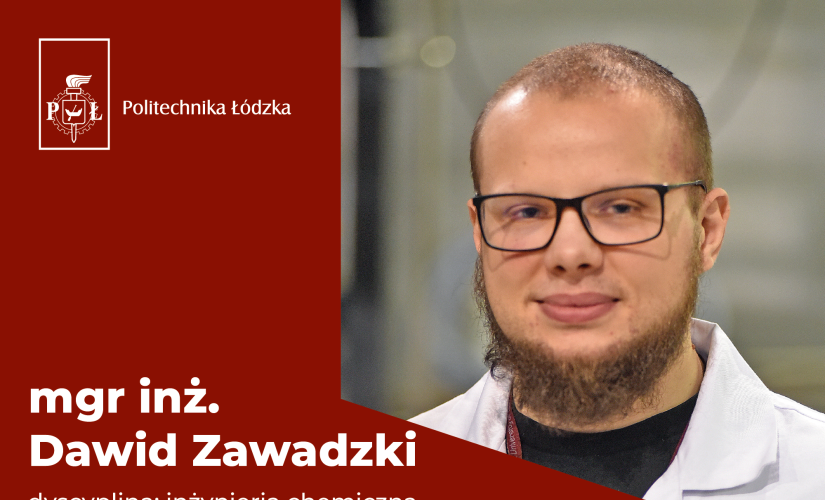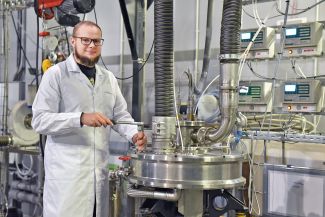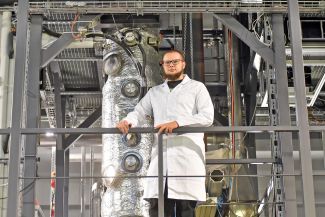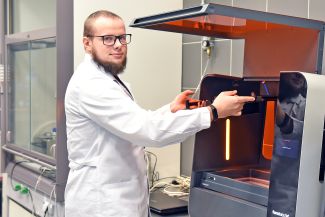What kind of threat can carbon dioxide pose to humans?
High emissions of carbon dioxide affect the climate around us. It is one of the causes of global warming, with long-term effects including rising water levels, changing climatic conditions and precipitation patterns. The main emitters of CO2 are power plants and heavy industry factories. Attempts are currently being made to reduce carbon dioxide emissions through large-scale sequestration. This involves capturing CO2 from flue gases and then disposing of or depositing it in such a way that it does not enter the atmosphere.
Where did your interest in this subject come from?
I already had the opportunity to work with 3D printers during my first-cycle studies as part of my activities in the Oktan research club. This allowed me to get to grips with 3D design software. While still at university, I was involved in various projects at the Faculty, which only developed my interest and encouraged me to continue my studies during my PhD. The topic of my thesis was to set up a new measurement system for a drying column and simulate the flow using computational fluid mechanics (CFD). While involved in one of the projects, I had the opportunity to help build a CO2 absorption plant using an RPB (Rotating Packed Bed gas absorber).
How innovative is this compared to the available solutions?
To date, the conventional fillings used in RPBs are various types of porous structures, e.g. helically wound metal mesh, woven metal mesh. Unfortunately, in RPB, as the radius increases, the transverse flow area increases, resulting in dry, non-working infill zones. The type of infill that my PhD focuses on (i.e. baffled) is characterised by a uniform self-distribution of fluid throughout the infill. This allows the effective mass exchange area within the same apparatus to be increased up to twofold.
Where will these absorbers find applications?
The greatest advantage of RPB technology is the replacement of gravitational force by centrifugal force, which can be up to 1,000 times greater than the force of gravity. This results in a high dispersion and short residence time of the liquid, which translates into a compact device. Thanks to such advantages of the device, the RPB can find application in areas where the weight and volume of the apparatus is crucial. These include oil rigs, ships, submarines and perhaps, in the future, spacecraft.
What does your research work look like?
This process is changing. My tasks can be divided into three categories: modelling, fabrication and measurement. In terms of the tools I use, these include CAD software for 3D modelling, CFD simulation software-Fluent from the Ansys package, Matlab or excel for modelling and data processing, and numerous workshop-typical tools. Designing infills requires knowledge of the capabilities and limitations of 3D printing, the operational range of the RPB, and more specifically the rotational speed and forces acting on the infill. During the design itself, it is also necessary to know what such an infill should be characterised by. Here we have a combination of mechanical, materials and process engineering. Mathematical modelling is typically process engineering knowledge, which itself is strongly interdisciplinary, linking chemistry and physics.
Why study at IDS?
Because of the interdisciplinary nature of the education. You can broaden your horizons and look at an issue in a different way. Group classes with doctoral students from other disciplines enable a topic
to be discussed by people with a different perspective based on their knowledge. We have a wide range of courses available that inspire you to develop further.
Agnieszka Garcarek-Sikorska





